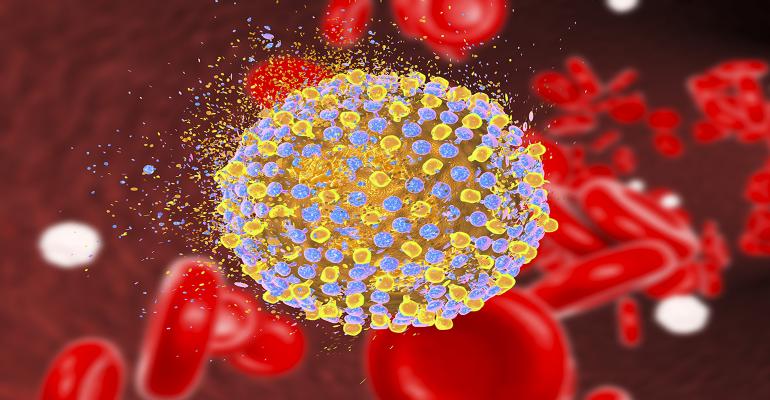Entirely curable due to breakthroughs once thought impossible in medicine, Hepatitis C (HCV) is among the leading causes of preventable death globally. Despite the availability of life-changing treatments and testing improving, the Middle East and North Africa region has the highest prevalence of HCV infections worldwide.
To play their role in reducing preventable deaths, the healthcare industry has the responsibility to support government efforts to build sustainable systems for screening and treatment alongside backing civil society efforts in reaching high-risk groups through targeted approaches that combine education, screening and care. We as an industry must play an active role within public health initiatives that seek to diagnose, treat and cure patients, and to prevent new infections.
Innovation has ensured that HCV today can be easily cured with just 12 weeks of oral direct-acting antiviral drugs, offering significant clinical, economic and public health value to patients, their families and healthcare systems. However, the gravest and most pressing concern is that many people with HCV have not been diagnosed, and accordingly didn’t receive medical treatment for the disease.
Delayed diagnosis and treatment often result in chronic infections with HCV that can in turn lead to serious and life-threatening liver damage, including cirrhosis, cancer and the need for transplantation. This means that time is of the essence towards ensuring healthy communities, with the World Health Organization aiming to eliminate the disease globally by 2030. To achieve this, the global community will increasingly require treatments that are highly effective and have simple dosing regimens with broad clinical utility.
These treatments will support the Global Health Sector Strategy that calls for the elimination of viral hepatitis as a public health threat by 2030. An approach that combines empowering general practitioners with a focus on at-risk communities will allow the industry to support governments in eliminating the disease. There needs to be greater teamwork on maintaining quality data on HCV epidemiology that are required for the GP to target key populations. Multi-stakeholder collaboration between governments, primary care providers, other healthcare specialists, policy makers and pharma companies are key to achieving WHO HCV elimination targets, together covering ground to ensure early detection, treatment and the prevention of the virus within the community.
Targeted scale-up of HCV treatment especially within at-risk communities can dramatically reduce prevalence. By quickly curing micro-population segments through short-term yet high efficacy HCV treatments, the frequency of healthcare visits and hospitalizations will be drastically reduced, lowering expenditure and the need for patients to undergo long-term medications to manage side effects and complications. WHO’s strategy defines elimination as an 80 per cent reduction in new HCV infections and a 65 per cent reduction in HCV mortality.
Focusing clearly defined populations is crucial as wider populations not being screened routinely for HCV. The micro-elimination approach enables a more realistic allocation of support from medical professionals who can tailor interventions to suit the need of a target group. To support global micro-elimination efforts, the Gilead Medical Affairs team has funded up to 30 projects around the world. An effective concept in the fight against HCV, micro-elimination ultimately achieves full national elimination by targeting one risk group at a time and tailoring treatments to the unique needs of these populations, delivering significantly faster results and reducing costs than a full-scale initiative.
Further to micro-elimination, on a worldwide basis, Gilead is developing programmes and partnerships to help ensure patient access with licensing agreements with generic pharmaceutical manufacturers to expand access to HCV medicines in 91 developing countries, representing more than half of the global HCV-infected population.
In the Middle East, we have been helping the HCV community by supporting disease awareness programmes for patients and expanding knowledge and skills for healthcare through programs such as the “Ready to Be Cured” programme in markets including KSA, the UAE and Kuwait further to treating more than 10,000 patients between 2014 and 2019. In partnership with the UAE MoH, Gilead launched the MAAK Access Programme which improved access to Gilead HCV drugs for patients in need. More than 350 patients have been enrolled, from 50 referring physicians in over 30 hospitals & clinics. Gilead continues to support and facilitation of the implementation of the HCV elimination program led by the Dubai Health Authority.
References available on request.


